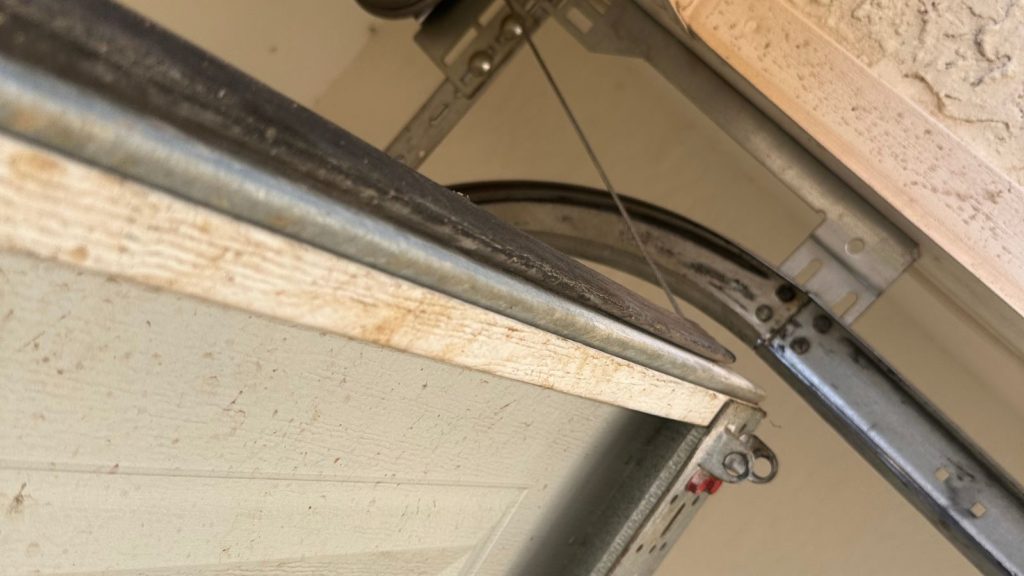Many people overlook the importance of the garage door seal and underestimate the impact a damaged seal really can have on the garage space and the potential of garage door repairs. We will explore how to tell if your seal is damaged or old as well as the things you may experience with a damaged or old garage door seal.
How do I know if my garage door seal is damaged or old?
Checking your seals on a monthly basis is highly recommended, especially when the weather is hard to predict. Below, are 3 ways to check if your seal may need to be replaced:
- Turn your interior garage light on and roll the garage door down all the way. From the outside, look in (through the seal). If you see the inside light, it’s time to replace your seal.
- Roll your garage door down all the way and lightly spray your hose at the bottom of the door. Check inside and see if there is any seepage.
- Roll your garage door up and run your hand across the seal. It should be completely flat with no holes or cracks.

What happens if I don’t replace a damaged/old seal?
Defective seals can cause various complications. Below, we listed the 3 major complications resulting from a bad seal:
Increased Condensation
Condensation most certainly will make its way through an old or damaged seal. Signs may include cloudy windows, moist feeling inside, musty/fishy smell, or in extreme cases, even small pools of water may form at the base of the seal.
Dust/Debris Accumulation
Large cracks or missing chunks of the seal can allow water, dust, small rocks, or even small animals to come through the bottom of the the garage; each causing their own unique situations.
Temperature Changes
With a damaged/old seal, your interior temperature of your garage will be closer to that of the outdoors, than that of your house. Garage door seals do in incredible job at regulating the temperature and saves you hundreds of $ yearly on your electric bill.
My garage door seal needs to be replaced, can I replace it myself?
Short answer, yes, but we recommend against it. There are many steps involved and tools needed to complete this replacement (see here for a how to). Should you skip a step or not have the right tool, you could experience any of the above issues.
